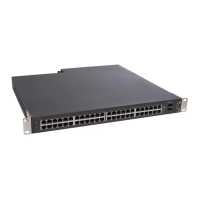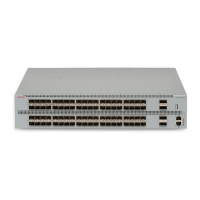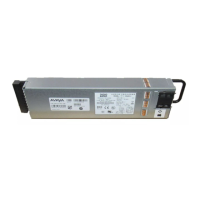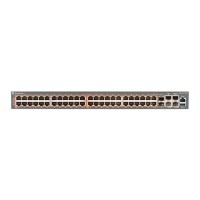viewing the event log after a stack port goes down, use the following information to help
determine the problem:
• Message Stack port 1 DOWN or Stack port 2 DOWN means Cascade-Down link is down.
• Message Stack port 1 UP or Stack port 2 UP means Cascade-Down link is up.
• Message Stack port 3 DOWN or Stack port 4 DOWN means Cascade-Up link is down.
• Message Stack port 3 UP or Stack port 4 UP means Cascade-Up link is up.
Figure 6: Redundant stack configuration
For stack installation procedures, see
Stack configuration on page 85.
Identifying cables to use with the Ethernet Routing Switch
The following table lists the required cables for a 5000 Series switch and cable specifications.
Table 2: Switch cabling requirements
Required cable Description
10/100/1GBase-T Ports The interconnect cabling must conform to the Cat5e, Cat6,
or Cat6e specification of the Commercial Building
Telecommunications Cabling Standard, ANSI/TIA/EIA 568-
B fitted with an RJ-45 Module Jack.
Console Port Serial cable with a DB-9 female connector on both ends.
The maximum length for the console port cable is 25 feet
(8.3 meters).
Shared SFP Transceiver
Ports
Varies with the installed SFP Transceiver. Refer to the
documentation that was shipped with the SFP Transceiver
for specifications.
XFP Transceiver Ports Varies with the installed XFP Transceiver. Refer to the
documentation that was shipped with the XFP Transceiver
for specifications.
Placement options and cables
Avaya Ethernet Routing Switch 5000 Series Installation December 2010 33

